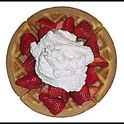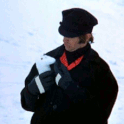metric measurements?
hi, I'm sure I can't be the first to ask this question but I can't find any reference to it on the site. It would be amazing if you could provide a metric conversion for recipes as I find the standard American cup (etc) measurements rather imprecise. Being Europe-based, I'm obviously not used to them but I find it tricky to figure out how to measure precisely a 'tablespoon of butter' for example! You can buy the cup measurements here in the UK but not everywhere and, in any case, I'd prefer to do it by weight but there is not always a precise conversion for each type of ingredient (e.g cornmeal)... thanks!
20 Comments
This question is 5 years old!! 😖
Meanwhile I use http://www.onlineconversion.com/cooking.htm to convert as they have specific conversions for butter, by cups etc.
http://leitesculinaria.com/conversions.html.
I'm 98% in agreement with you. If you approach the conversion issue with nothing more clever than math, the results will indeed be strange and cumbersome. But computerized conversions are only as good as the programmer. We call it computer science but it, too, is an art.
Of course nothing can compensate for the moisture level in the flour.
Susan G - I haven't come across any metric recipes on this site just yet but maybe I haven't been around long enough. interesting to hear you have the opposite problem!
BoulderGalinTokyo: a law? really? brilliant!
seems there are lots of websites dealing with the tricky subject of conversions and I guess it would be boring if everyone had the same approach.
As someone who has changed to metric, I try to include these measurements in my recipes. It isn't very easy. There is a very humorous discussion in The Joy of Cooking about comparative measurements on teaspoons, etc.
Recently my biggest headache was changing ? to ?, then I got a convection oven more confusing, so I like this site (also has Eng. Gas Mark 2-9)
http://www.taste.com.au/how+to/articles/369/weights+measurement+charts
ChrisBird, I agree the 2 1/4 lbs of peppers does seem like a case of lost in translation alright and thanks for the tip about pasting the measurements to my kitchen door - have been thinking of doing that - a good alternative to having to resort to a calculator! I shall persevere for now..
You might want to weigh out standard measures of common ingredients and paste them to the back of your pantry door. So the ratio for corn meal for example. So next time you can look it up. I wouldn't bother because my scale is my friend.
It is quite amusing when seeing books translated from another language and converted to a different measurement system to see ridiculous amounts of precision. For example in the wonderful "I know how to cook" which is translated and converted from the French "Je sais cuisinier", the recipe for piperade calls for 2 1/4 lbs of green bell peppers. How important is that 1/4? I suspect that since 2 1/4 lbs is about 1kg, the original called for 1kg. So occasionally we will see precsion (but not necessarily accuracy) because of a direct conversion.
And of course 1 fl oz of water doesn't weigh an ounce. And liquid measures are different from dry goods measures.
My head hurts - so I just went metric!
http://www.canadianliving.com/food/baking_and_desserts/liquid_and_dry_measure_equivalents.php
Meriposa
These are the scales I use in my kitchen:
http://www.oxo.com/p-501-food-scale-with-pull-out-display.aspx
http://www.amazon.com/dp...
The spoon scale seems silly and nerdy, but that thing can measure tiny amounts of anything. I use it for measuring fresh yeast when making pizza, because the larger scale cannot give a precise reading for such small measurements.
I've never considered that irony, Pierino, thanks for the laugh.
But it does get tricky when you're trying to figure out how many grams a tablespoon of butter weighs if you don't know how many ounces it is. I'm pretty sure it's a half-ounce if I did my math correctly, so 1 tablespoon of butter = 1/2 ounce = about 14.18 grams.
Hope this helps!









